In an equilibrium reaction for which , the equilibrium constant K =
0
1
2
10
The correct Answer is:B
If
Topper's Solved these Questions
- BOOK - ERRORLESSCHAPTER - CHEMICAL EQUILIBRIUMEXERCISE - NCERT BASED QUESTION (Le-Chatelier Principle and it.s Application)45videos
CHEMICAL EQUILIBRIUM
- BOOK - ERRORLESSCHAPTER - CHEMICAL EQUILIBRIUMEXERCISE - PAST YEARS QUESTIONS37videos
CHEMICAL EQUILIBRIUM
- BOOK - ERRORLESSCHAPTER - CHEMICAL EQUILIBRIUMEXERCISE - NCERT BASED QUESTION (Law of Equilibrium and Equilibrium Constant)65videos
CHEMICAL EQUILIBRIUM
- BOOK - ERRORLESSCHAPTER - CHEMICAL BONDING AND MOLECULAR STRUCTUREEXERCISE - Assertion & Reason17videos
CHEMICAL BONDING AND MOLECULAR STRUCTURE
- BOOK - ERRORLESSCHAPTER - CLASSFICATION OF ELEMENTS AND PERIODICITY IN PROPERTIES EXERCISE - Assertion & Reason14videos
CLASSFICATION OF ELEMENTS AND PERIODICITY IN PROPERTIES
Similar Questions
Knowledge Check
- Question 1 - Select One
In an equilibrium reaction for which ΔGɵ=0, the equilibrium constant K should be equal to :
AZeroB10C1D2 - Question 2 - Select One
In an equilibrium reaction for which ΔG=0, the equlibrium constant K =
A0B1C2D10 - Question 3 - Select One
If the equilibrium constant for a reaction is 4⋅0 , what will be the equilibrium constant for the reverse reaction.
A1B4C0.25D25
For the reaction H2(g)+I2(g)⇔2HI(g), the standard free energy is ΔGΘ>0. the equilibrium constant (k) would be.
View SolutionThe reaction which is in dynamic equilibrium, ensured us, that the reaction is reversible . But if that the reaction is in equilibrium. The reaction quotient predict either the reversible reaction is in equilibrium or tries to achieve equilibrium. In those reactions which have not achieved equilibrium, we obtain reaction quotient Qc in place of equilibrium constant (Kc) by substituting the concentration of reactant and product at the time, at whih we have to calculate the value of Qc . To determine the direction at which the net reaction will proceed to achieve equilibrium, we compare values of Qc and Kc. The three possible cases are shown as comparison of Kc and Qc in the following figures.
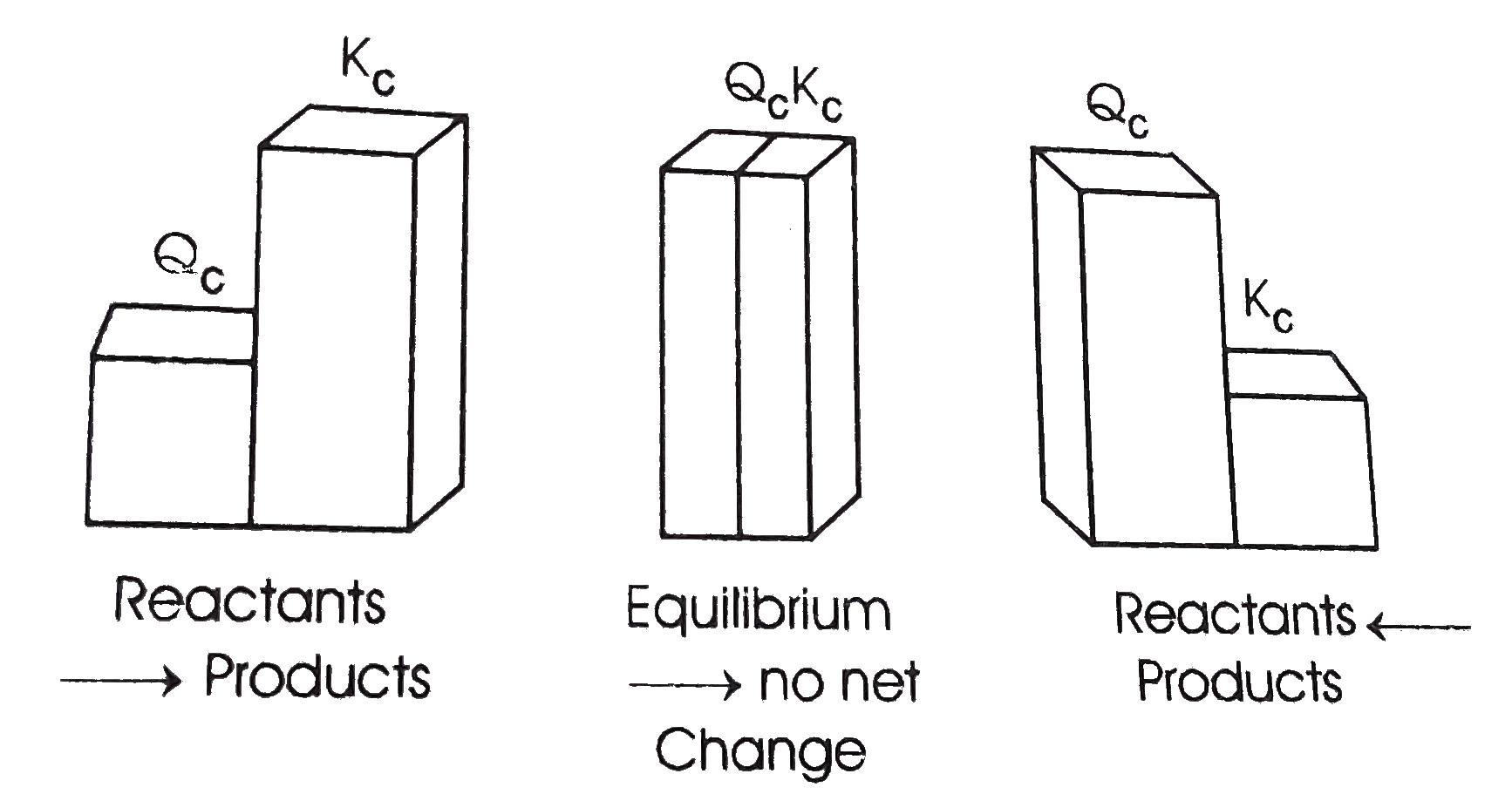
Change in Gibbs free energy, i.e., ΔG is the driving force of any reaction.
For spontaneous reaction , ΔG=−ve
For non-spontaneous reaction , ΔG=+ve
For reaction at equilibrium , ΔG=0
Thermodynamically, we know that
ΔG=ΔG∘+RTlnQ, where Q is reaction quotient and ΔG∘= change in Gibbs energy at standard condition.
For equilibrium A(g)⇔B(g)(Keq=1.732) If the pressure of the system [varied by introducing a stream of A(g) and B (g) is represented by the curve at constant temperature T.

Which of the following is the correct statement at point R in the figure above ?View SolutionThe reaction which is in dynamic equilibrium, ensured us, that the reaction is reversible . But if that the reaction is in equilibrium. The reaction quotient predict either the reversible reaction is in equilibrium or tries to achieve equilibrium. In those reactions which have not achieved equilibrium, we obtain reaction quotient Qc in place of equilibrium constant (Kc) by substituting the concentration of reactant and product at the time, at whih we have to calculate the value of Qc . To determine the direction at which the net reaction will proceed to achieve equilibrium, we compare values of Qc and Kc. The three possible cases are shown as comparison of Kc and Qc in the following figures.
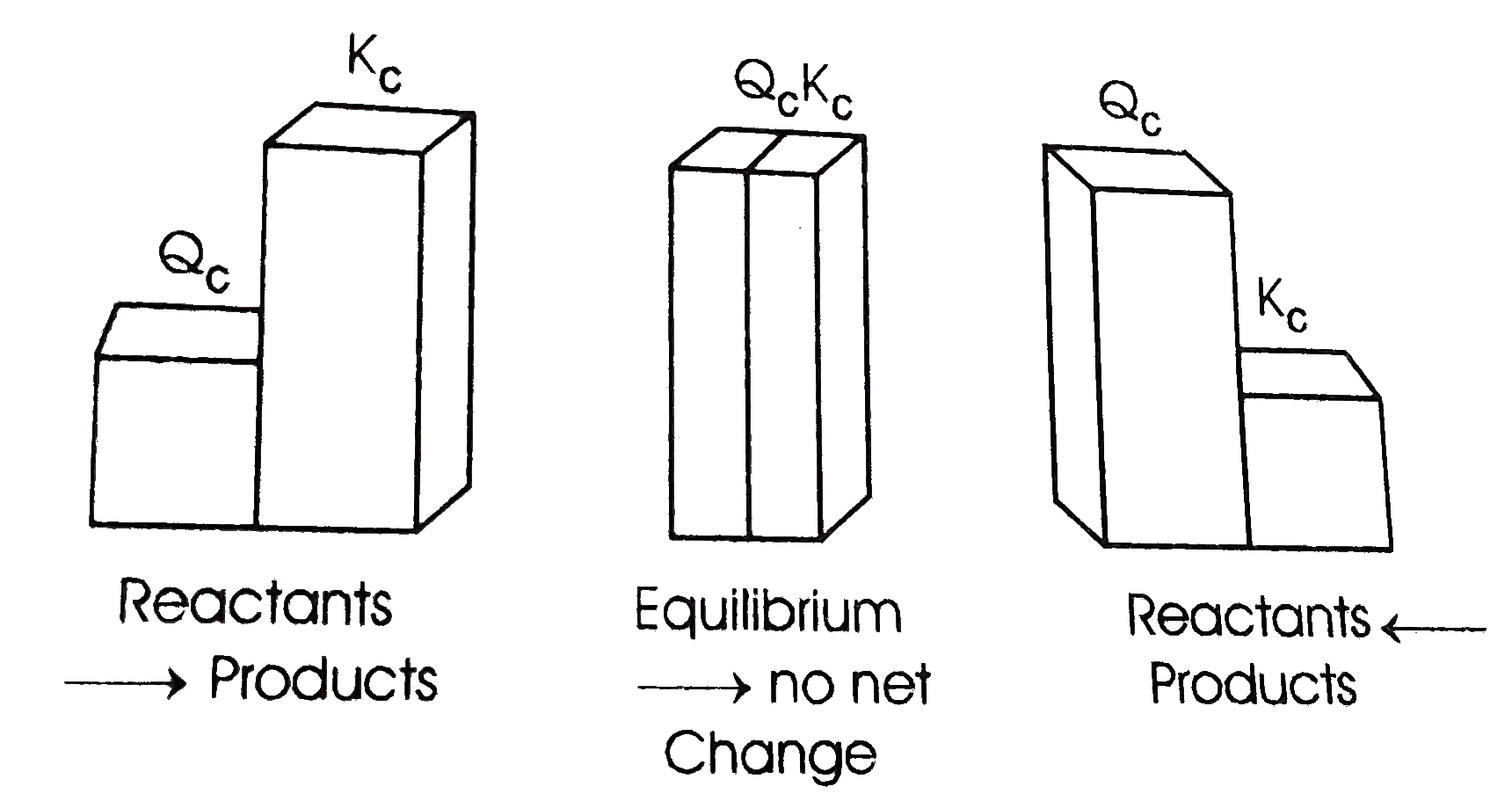
Change in Gibbs free energy, i.e., ΔG is the driving force of any reaction.
For spontaneous reaction , ΔG=−ve
For non-spontaneous reaction , ΔG=+ve
For reaction at equilibrium , ΔG=0
Thermodynamically, we know that
ΔG=ΔG∘+RTlnQ, where Q is reaction quotient and ΔG∘= change in Gibbs energy at standard condition.
For equilibrium A(g)⇔B(g)(Keq=1.732) If the pressure of the system [varied by introducing a stream of A(g) and B (g) is represented by the curve at constant temperature T.
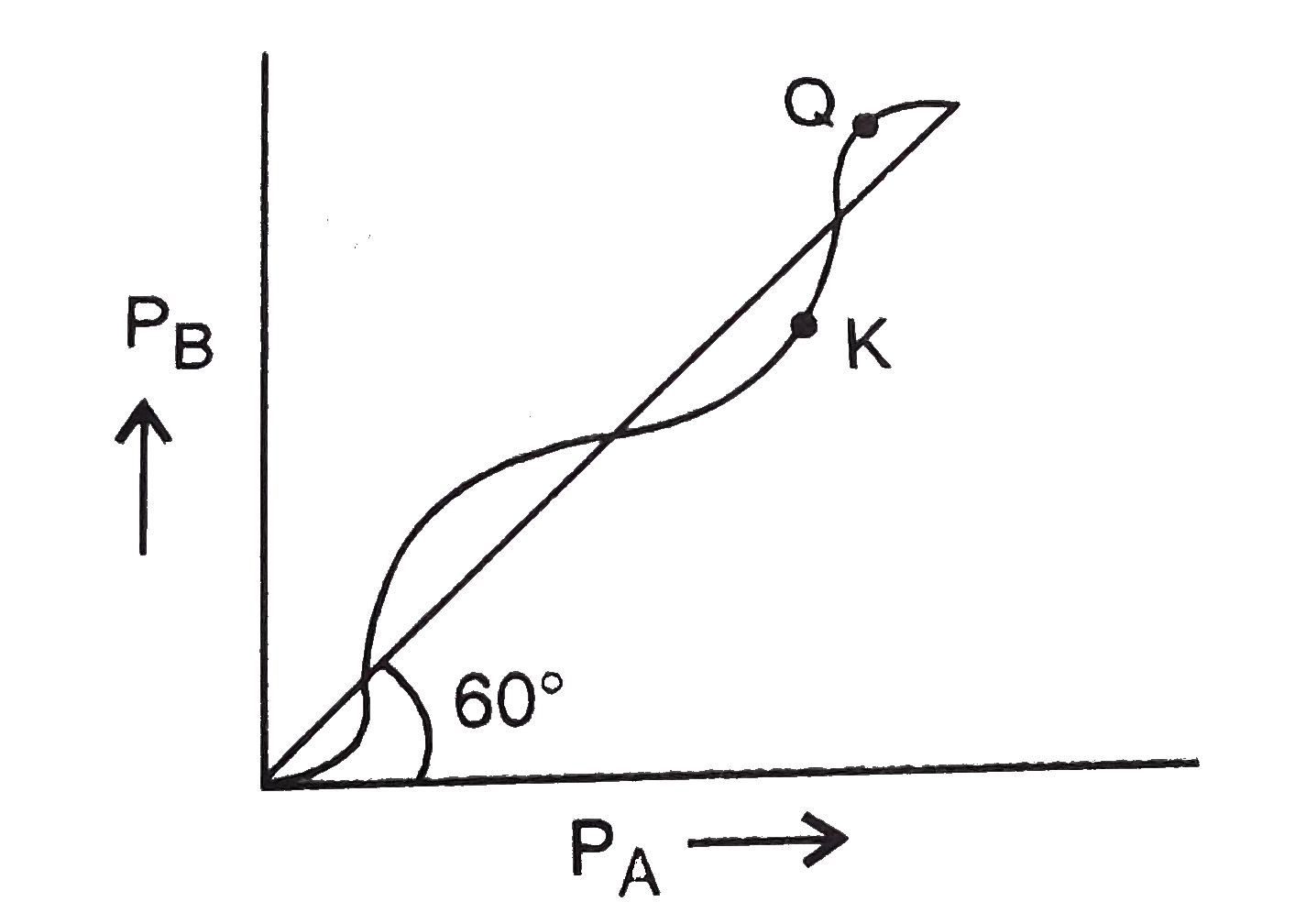
What will be the value of difference of standard Gibbs free energy to Gibbs free energy change at point Q in the figure above ?View SolutionThe reaction which is in dynamic equilibrium, ensured us, that the reaction is reversible . But if that the reaction is in equilibrium. The reaction quotient predict either the reversible reaction is in equilibrium or tries to achieve equilibrium. In those reactions which have not achieved equilibrium, we obtain reaction quotient Qc in place of equilibrium constant (Kc) by substituting the concentration of reactant and product at the time, at whih we have to calculate the value of Qc . To determine the direction at which the net reaction will proceed to achieve equilibrium, we compare values of Qc and Kc. The three possible cases are shown as comparison of Kc and Qc in the following figures.
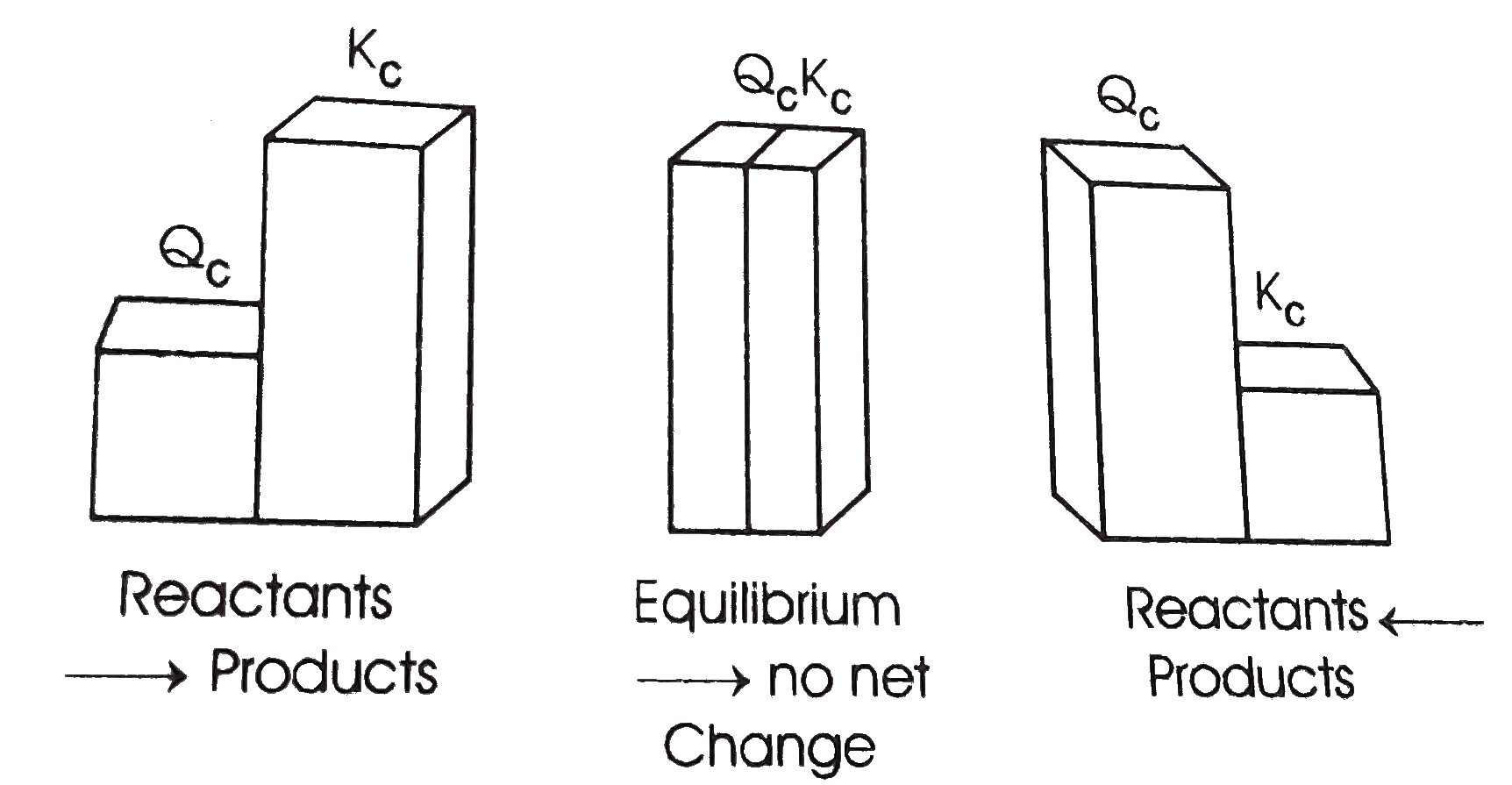
Change in Gibbs free energy, i.e., ΔG is the driving force of any reaction.
For spontaneous reaction , ΔG=−ve
For non-spontaneous reaction , ΔG=+ve
For reaction at equilibrium , ΔG=0
Thermodynamically, we know that
ΔG=ΔG∘+RTlnQ, where Q is reaction quotient and ΔG∘= change in Gibbs energy at standard condition.
For equilibrium A(g)⇔B(g)(Keq=1.732) If the pressure of the system [varied by introducing a stream of A(g) and B (g) is represented by the curve at constant temperature T.
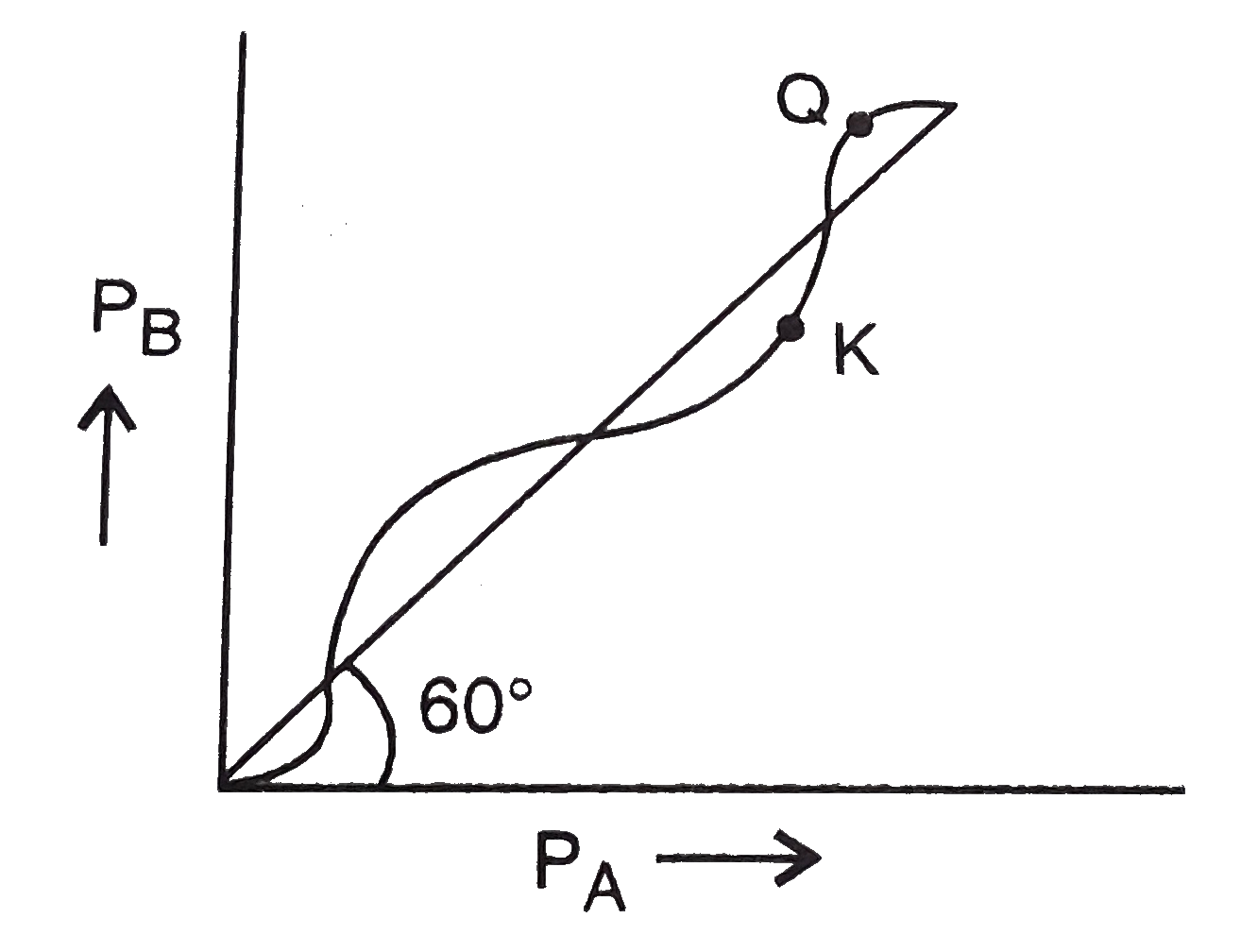
For equilibrium system
N2O4(g)⇔2NO2(g)
N2O4(g) is in a cylinder which is fitted with movable piston. Assume that equilibrium partial pressure of N2O4(g) and NO2(g) are 10 and 14 atmospheres respectively. If the piston of the cylinder is pulled out in such way so that volume of the system than what will be the value of equilibrium partial pressure of the NO2 gas ?View SolutionThe reaction which is in dynamic equilibrium, ensured us, that the reaction is reversible . But if that the reaction is in equilibrium. The reaction quotient predict either the reversible reaction is in equilibrium or tries to achieve equilibrium. In those reactions which have not achieved equilibrium, we obtain reaction quotient Qc in place of equilibrium constant (Kc) by substituting the concentration of reactant and product at the time, at whih we have to calculate the value of Qc . To determine the direction at which the net reaction will proceed to achieve equilibrium, we compare values of Qc and Kc. The three possible cases are shown as comparison of Kc and Qc in the following figures.

Change in Gibbs free energy, i.e., ΔG is the driving force of any reaction.
For spontaneous reaction , ΔG=−ve
For non-spontaneous reaction , ΔG=+ve
For reaction at equilibrium , ΔG=0
Thermodynamically, we know that
ΔG=ΔG∘+RTlnQ, where Q is reaction quotient and ΔG∘= change in Gibbs energy at standard condition.
For equilibrium A(g)⇔B(g)(Keq=1.732) If the pressure of the system [varied by introducing a stream of A(g) and B (g) is represented by the curve at constant temperature T.
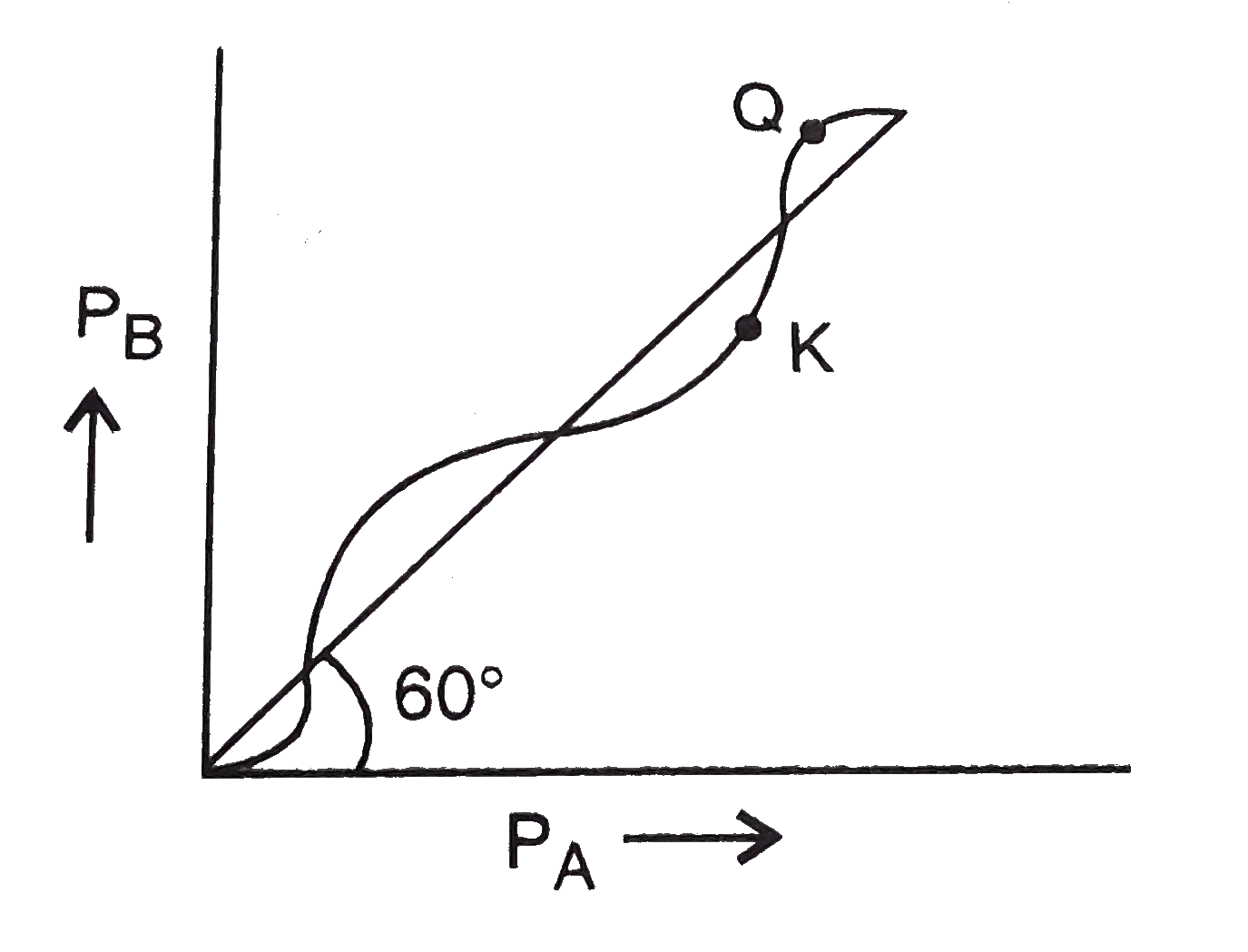
Suppose N2O4(g) is enclosed in a cylinder fitted with a movable piston which attains the following equilibrium
N2O4)(g)⇔2NO2(g)
Given that for the 10 atmosphere pressure of the equilibrium mixture, the content of NO2 is 8×15 ppm. if the piston of cylinder is moved upward in such a manner so that the volume of the gaseous mixture becomes double, then what will be new ppm of NO2(g) in the cylinder ? ( Assuming that the temperature of the cylinder remains constant )View Solution

